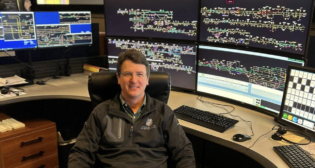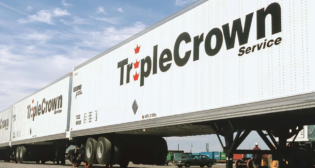
Today’s Service and Labor Problems: Unlearning Intuitive Human Behavior
Written by Gil Lamphere and John McPhersonWARNING: Reader Discretion Advised. The following story is not fictional and depicts actual people, events and outcomes based on 75 combined years of rail experience:
Fifteen years ago, a Class I faced increasing demand cascading on top of an already congested system. Customers insisted on more cars, more pick-ups. Instead of first clearing and rebalancing the system and achieving fluidity before adding more equipment, the ops executives acquiesced to the salespeople and threw more cars, equipment and “best efforts” service promises into the system.
Dwell, speed, on-time origination and arrival times, train starts, cars on line and every other metric deteriorated further. The service numbers became known as “The Good, The Bad and the Ugly.” A few customers received ok service most of the time, the rest was catch-as-catch-can. Finally, as congestion worsened, railroad management came up with the idea that every customer, salesperson and network ops controller was to be given an iPad so everyone could simultaneously see the location of the customer’s car(s). Customers loved it. J.D. Power’s customer satisfaction ratings soared to 9.0. Congestion hit new highs. But customers psychologically knew where their car was. What a relief! As long as that car was picked up, it became the railroad’s problem, not the customer’s. The car inched its way toward its destination, but apparently that was now okay.
Finally, a serious recession occurred. The congestion problem was solved! Thank God for economic crises!
Why is this story relevant? Because both then and now, many railroads (not all) have gotten away from core operating principles that govern a fluid, balanced network that consistently matches a railroad’s resources to fulfilling a reasonable customer expectation. The parallels to today are eerie in their similarity. Today, railroads can blame service problems on a shortage of crews, congestion bottlenecks and spikes in demand, but those reasons may be closer to symptoms and conditions to be solved for, not underlying causes. Customer demands can only be addressed when the system is fluid.
Today’s mantra must be “Houston, we have a problem”—strategic initiatives of growth, marketing, technology or Wall Street need to be hung up on the clothes hook and recalibrated around operating efficiency.
The answer to good service (and problems) has been 34 years in the making and is no secret recipe: Start with the Transportation Service Plan (TSP) and follow it!
- TSP service is based on the optimum ability of the network and its worker. The idea is simple: plan everything. To do this one has to know when a car is to be released from an industry, when it can be pulled into the classification yard, and how quickly can it be switched and consolidated into a scheduled train. The same is true at the final destination or inter hand location.
- In order to depart a train on time, one has to plan when 1) to cut off switching in order for the mechanical inspection and air brake test to take place; 2) the locomotive consist needs to be inspected and made ready; 3) the train crew needs to be called for duty.
- If a railroad operates the same plan every day, then the yardmasters, yard switching crews, the mechanical department (both locomotive and car) and the dispatchers know what to expect and what is required throughout their shift.
- By operating consistently according to plan, a railroad is able to create assigned starting times for equipment and crews and even design “meet-me trains” where crews run to a designated location, swap trains and return to their home terminal within the hours of service requirement.
All this conveniently bring us to the most valuable capital resource in achieving good service: Labor. Think about it: How would you like to work under conditions where you didn’t know when you go to work, when you get off, and have to spend 12-14 hours getting rest at the away-from-home hotel room?
How does TSP “fit in” labor, a railroad’s most important asset? Again, start simply:
- Base a move on the length, tonnage and horsepower per ton to move the train over each crew district within the hours of service law
- Use simple math: How many more crews would you have available if every train made a crew district run in 10 hours vs. 12 hours?
- How much expense did you save running a 15,000-foot train requiring 3 tracks to build, having to recrew in-route and requiring 3 tracks to yard?
In conclusion, to achieve or regain good service, go back to practicing proven railroading basics. Set a goal of continuous improvement to move traffic faster and consistently. Restore on-time reliability. Deftly play the physical and human resource cards dealt you and restore operational integrity. Make promises to customers, mean ’em, and keep ’em. If you can’t keep ’em, don’t make ’em. Don’t say “We’ll try our best.” That may be 1980s talk, but it’s just as valid today.
And, on a final note, let’s talk about money. When you encounter today’s problems of congestion and pinch points, look first for an operating solution. If it becomes obvious you need to make a capital investment to extend a siding, add a crossover or rebuild yard receiving and departure tracks, then make it. Alternatively, you may find that adding a job at a location that moves cars faster, reduces dwell time, car-hire and congestion will actually saves you money. If it costs money, spend it. It may well reduce assets needed or be a one-time expense or capex.
Wall Street will understand spending money to restore operational integrity and enhance growth and pricing. (Wall Street will understand saving money, for sure!) Your workers can go back to doing their jobs. And customers will have a system that works.
Gil Lamphere is Chairman of MidRail LLC, was former Chairman of Illinois Central, and a member of the Board of Directors of CN, CSX and Florida East Coast Industries. John McPherson was CEO of Illinois Central and President of Florida East Coast Railway. Prior to Illinois Central, he spent 25 years in operating roles at the Santa Fe.



